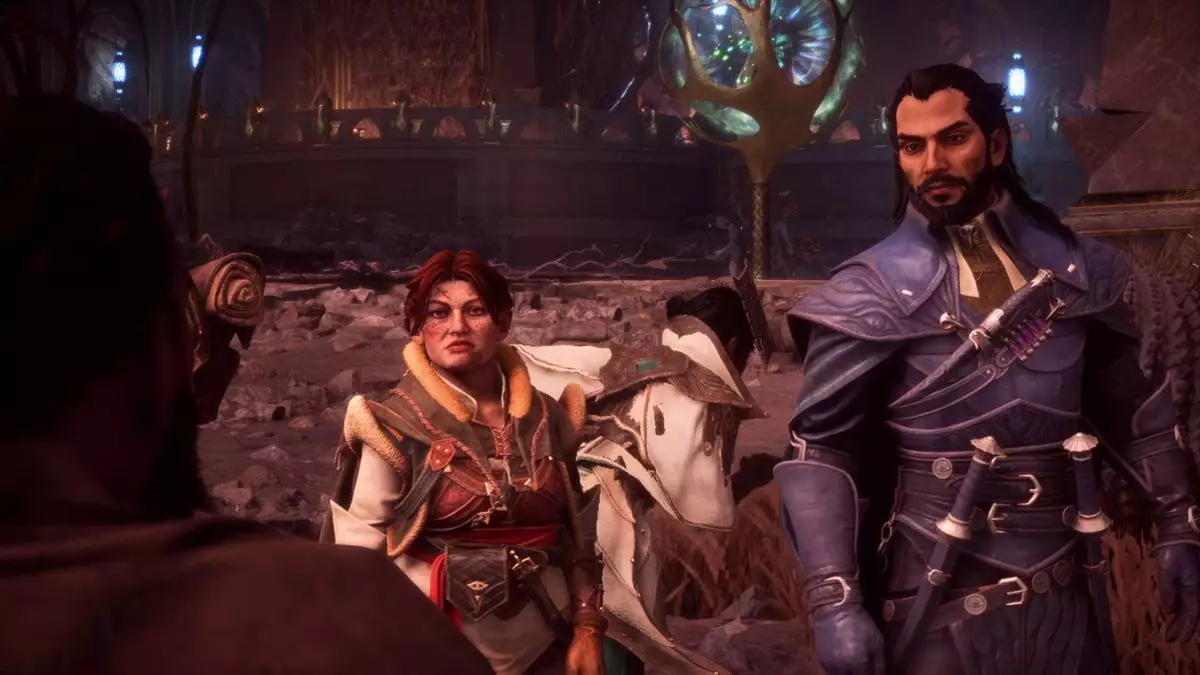The world of Dragon Age Veilguard presents players with intricate narratives and complications that demand a critical eye for decision-making. One of the most impactful choices in this installment comes when players must decide whether to support the city of Minrathous or Treviso. This decision, thrust upon the player with minimal warning, challenges their allegiance to both the factions and companions involved, creating a moment of tension and uncertainty typical of the Dragon Age series.
In the face of a cataclysmic threat posed by Blight Dragons controlled by the enigmatic Ghilan’nain, the player must choose which city to save. This choice is not merely a tactical decision; it has overarching implications that will resonate throughout the entire narrative. Each city represents various factions and characters, namely Neve and the Shadow Dragons for Minrathous, and Lucanis with the Antivan Crows for Treviso. As players approach this pivotal moment, they are confronted with the horror of the consequences, knowing that aiding one will inevitably doom the other.
This binary choice can serve as a reflection of the player’s moral stance, revealing their priorities when it comes to supporting different characters. The challenge lies not only in the immediate outcomes but also in the longer-term repercussions, which can significantly alter the gameplay experience.
Choosing to defend Minrathous provides a unique set of outcomes that shape the player’s journey in significant ways. When the player engages in the battle against the Blight Dragon here, the immediate relief of repelling the threat exists only momentarily. Ghilan’nain’s interference leads the dragon to abandon the fight, keeping Minrathous safe from further destruction. However, this ‘victory’ comes at a steep price. Treviso, the alternative city, suffers immensely, as the dragon attacks result in an immediate blight, causing all related side quests to fail automatically. The Antivan Crows, who previously enjoyed a semblance of safety, now find themselves at a significant disadvantage.
The loss is not limited to side quests; the faction merchant for Treviso disappears, impacting the player’s ability to engage with the merchant economy in that area. Additionally, Lucanis, a companion tied closely to Treviso, gains a hardened disposition, signaling emotional and narrative consequences that resonate with players who have developed a connection to him. Notably, those hoping to pursue a romantic relationship with Lucanis will find that path closed off, further complicating relational dynamics in the game.
Conversely, electing to support Treviso leads to its own chain of events. In this scenario, fighting the Blight Dragon results in a temporary victory, as its withdrawal mitigates damage to Treviso’s residents. The canals miraculously escape the blight, ensuring the survival of a significant portion of the civilian population. Nevertheless, this ‘success’ invariably triggers chaos in Minrathous. The city becomes overrun, leading to similar failures in side quests and resulting in the loss of a faction merchant as well.
Lucanis remains steadfast in Treviso, supporting the effort until players can bring others into their fold. However, his continued presence also comes at a cost—players who choose this path similarly find themselves unable to romance Neve, providing a painful reminder of the relationships that hang in the balance during these moments of crucial choice.
Beyond the straightforward consequence of character dynamics, the decision-making process showcases Dragon Age Veilguard’s thematic layers. The player is not only engaging with their immediate surroundings but is faced with the daunting task of managing side quests that may become unavailable or shift entirely based on their choice. Additionally, upon choosing, players must re-establish fast travel points in the city that faces destruction, which adds a layer of frustration to post-choice gameplay.
For players who feel discontent with the ramifications of their choice, the opportunity to reload a previous save opens the door for reflection and adjustment. This flexibility in gameplay reinforces the thematic essence that Dragon Age portrays—the notion that every action resonates through the tapestry of the game world, altering relationships, environments, and possibilities.
The dilemma of aiding either Minrathous or Treviso encapsulates the core of the Dragon Age experience: difficult choices that challenge the player’s values, relationships, and strategic planning. As players navigate this morally fraught terrain, they are urged to consider not just their immediate victories but the far-reaching effects that reverberate throughout their journey in Veilguard.

